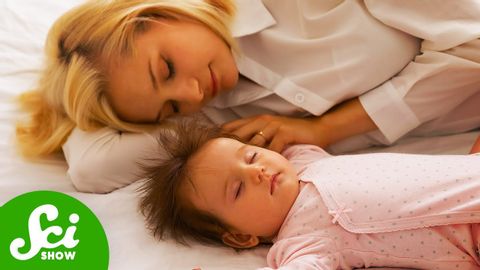外國人習慣嬰兒跟父母分房睡,「母嬰同睡」真的那麽危險嗎? (Is Co-Sleeping REALLY Dangerous?)
VoiceTube 發佈於 2024 年 09 月 12 日  沒有此條件下的單字
沒有此條件下的單字US /pəˈtɛnʃəl/
・
UK /pəˈtenʃl/
- adj.可能的;潛在的;潛在的
- n. (u.)潛力,潛能
- n. (c./u.)潛力;潛能;潛在候選人;勢
- n. (c./u.)串;束;一群人
- v.t.使成一串
- v.t./i.打褶
US /ˈprɛznt/
・
UK /'preznt/
- adj.出席;在場的;目前的
- n.正在進行的;現在時態;目前的;禮物
- v.t.介紹;主持;介紹;展現;贈送
- v.i.出現
US /ˈpɪriəd/
・
UK /ˈpɪəriəd/
- n. (c./u.)時期;(用於句末;表示斷定的口氣)就這樣;句號;月經;期間
